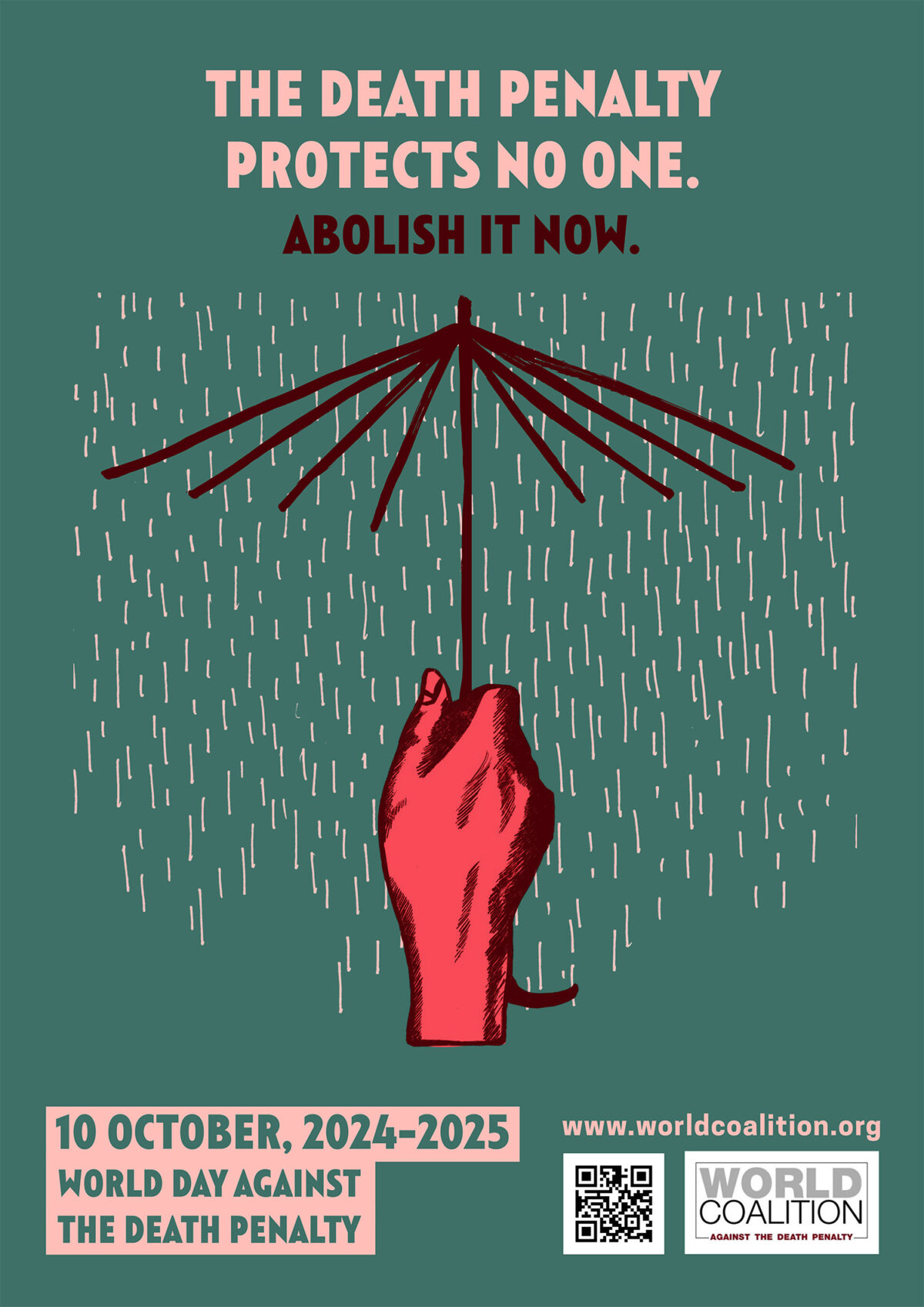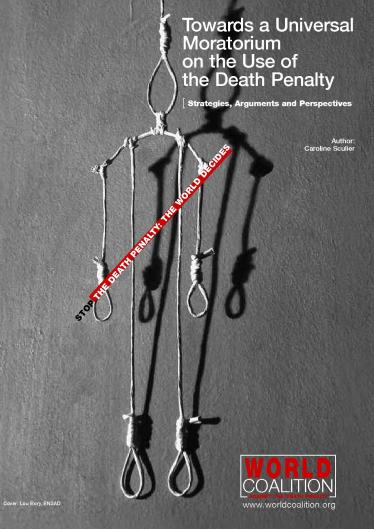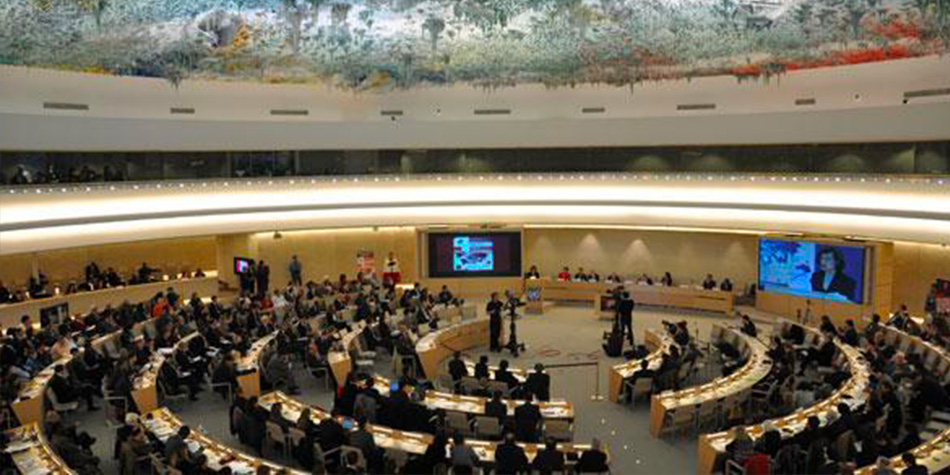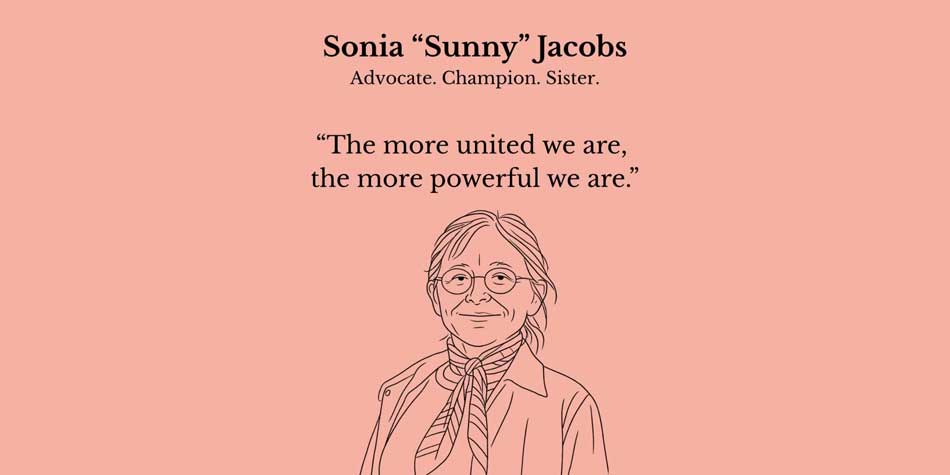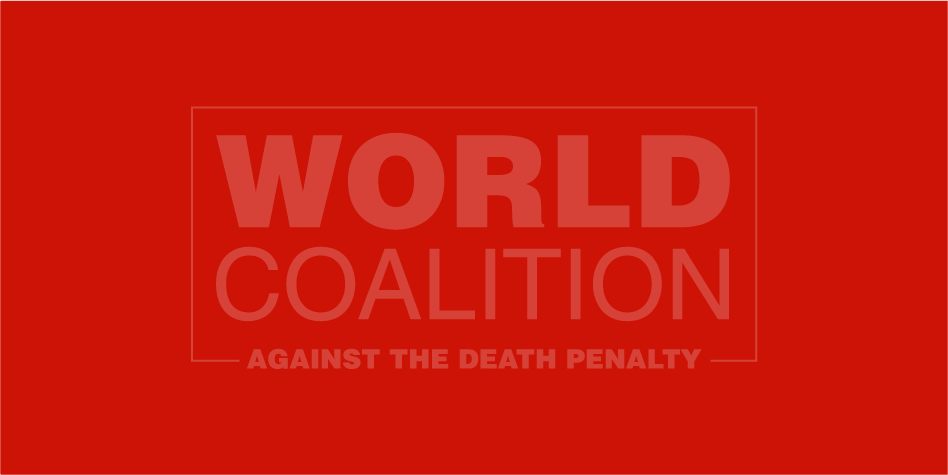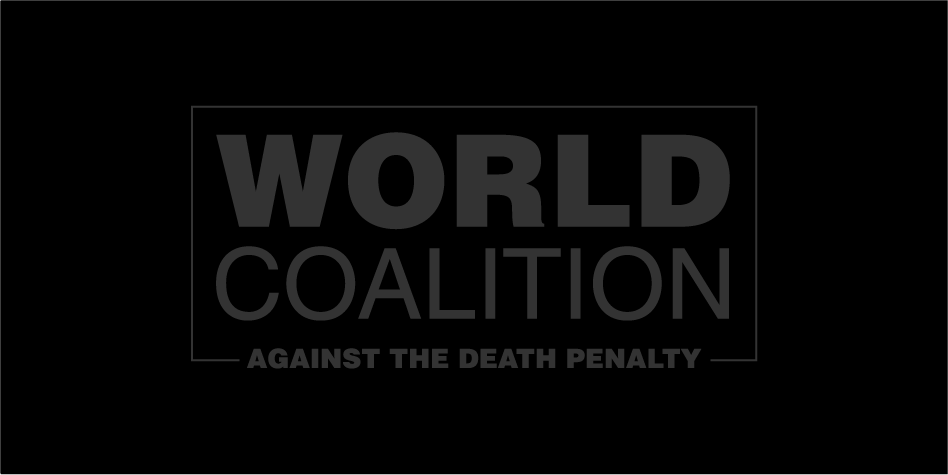
Women sentenced to death: An invisible reality
Statement
By Advocates for Human Rights, International Federation of ACAT (Action by Christians for the Abolition of Torture), International Harm Reduction Association (IHRA), non-governmental organizations in special consultative status, on 4 August 2021
The World Coalition Against the Death Penalty and supporting member organizations welcome the annual full-day meeting to discuss the human rights of women under resolution 6/30.
The Cornell Center on the Death Penalty Worldwide estimates that women represent less than 5% of the world’s death row population and less than 5% of the world’s executions. Amnesty International reports that of the 483 people known to have been executed in 2020, 16 were women.
Gender-based bias permeates criminal legal systems, manifesting itself in the investigative stage by law enforcement biases; at the trial stage, in which a fair trial may be unavailable for poor and uneducated women; and in sentencing, when women defendants are sentenced to death after being prevented from arguing that gender and patriarchy affected their criminal conduct. Furthermore, in retentionist countries women are frequently totally absent from or grossly underrepresented in decision-making positions within legal systems, contributing to the failure to take women’s experiences into account.
Gender bias may also influence sentencing when a judge considers gender-based factors applicable uniquely towomen. For example, when women are perceived to be the victim, or when their behaviors align with gender norms, such as the caregiver, they may benefit from leniency. In contrast, women perceived as the instigator of the crime, such as the adulterer or the witch, are more likely to receive a harsher punishment than men accused of similar offenses.
The crimes for which women are condemned to death reveal a gender-basis for those charges. Frequently, for example, women convicted of murder acted in response to an abusive husband or sex offender. Yet as the Office of the UN High Commissioner for Human Rights has noted, it is “extremely rare” for domestic abuse to be considered a mitigating factor in sentencing.
Conviction for drug offenses is the second most common reason for women to be on death row, particularly in Asia and the Middle East. Gender inequality plays an important role. Women tend to engage in drug smuggling due to economic and social marginalization. These convictions are usually for relatively minor offences, committed by women of economically deprived backgrounds. Women are frequently used as drug couriers because they are less likely to be caught and more easily controlled as they lack resources to buy or sell drugs for their own profit. Female migrant workers in particular are frequently recruited to serve as mules since they tend to have little education yet possess passports.
Adultery is another offense for which women are disproportionately sentenced to death. In jurisdictions that apply Sharia law, zina, the criminalization of adulterous consensual sexual encounters, appears to be gender neutral. In practice, however, women are convicted of zina at a disproportionate rate. Moreover, women confront barriers not presented to men. Extramarital pregnancy, for example, is prima facie evidence of zina. Not only is that evidentiary rule not gender neutral, it does not necessarily follow from adultery, since such a pregnancy could be the result of rape.
In many countries, women face capital punishment for terrorism-related offenses. Typically, these crimes are characterized by accusation of belonging to ISIS. The harshest sentences are reserved for foreign women who traveled to live under ISIS rule, married ISIS members, or received money and benefits from ISIS after their husbands died. Frequently these women are denied opportunities for substantive defense; attorneys rarely have access to their clients prior to trial, the charges brought against them are broad and all encompassing, and trials are hastily conducted. The result is often a sentence of life in prison or capital punishment.
The death penalty disproportionally affects the poor and vulnerable and members of racial, ethnic, or religious minorities. For women accused ofcapital offenses, this marginalization is compounded by “gender stereotypes, stigma, harmful and patriarchal cultural norms, and gender-based violence.” These factors have “an adverse impact on the ability of women to gain access to justice on an equal basis with men.”
International law prohibits the imposition of the death sentence on children under the age of 18 at the time of the offense. Yet some countries to continue to execute juvenile offenders. The crimes for which minors have been sentenced to death almost always involve gender-based violence, child marriage, or sexual abuse. Yet many trial courts fail to take into account gender-based violence as a mitigating factor in sentencing. In cases where a female minor has killed her abuser, she is often not able to raise domestic violence as a defense or mitigating factor. Courts also rarely take into account the psychosocial effects of child marriage, such as post-traumatic stress and depression.
Foreign nationals, particularly migrant workers who are domestic workers, are sentenced to death in disproportionate numbers. Many foreign domestic workers are unfamiliar with the local language and the legal process, unable to afford a lawyer, unable to make themselves heard, and are often denied effective legal representation. Moreover, female domestic workers often face exploitative work situations, and when they leave their employers or file a complaint, they are often charged with capital crimes, such as witchcraft or zina.
We call on the Human Rights Council and all UN Member States to abolish the death penalty and to take the following interim measures to address discrimination against women in the context of the death penalty:
- Promote awareness of World Day Against the Death Penalty on 10 October 2021.
- Eliminate the death penalty for non-violent offenses, particularly for drug offenses and “crimes of morality” such as adultery.
- Acknowledge the compounding forms of violence suffered by girls and women—including gender-based violence and forced marriage—and implement policies and legislative reforms that prevent the application of the death penalty when women act against their abusers.
- Codify gender-specific defenses and mitigation, encompassing women’s experiences of trauma, poverty, child marriage, andgender-based violence.
- Guarantee access to consular assistance for foreign women charged with death-eligible offenses.
- Require that the judiciary be trained on gender-based discrimination, domestic violence, and tactics of coercive control that lead to women committing death-eligible offenses.
- Ensure that women have access to free and effective legal counsel specialized in capital representation.
- Increase the number of women involved in decision-making positions within legal systems, including judges, prosecutors, and court administrators.


